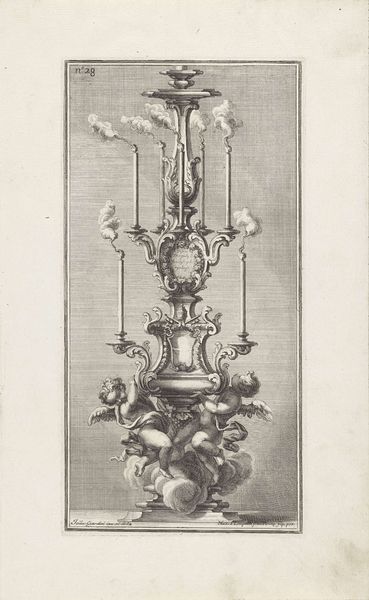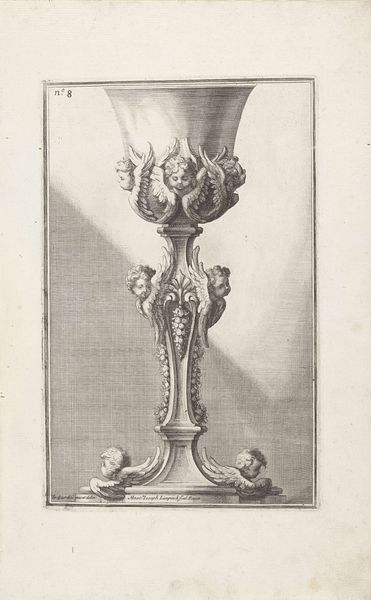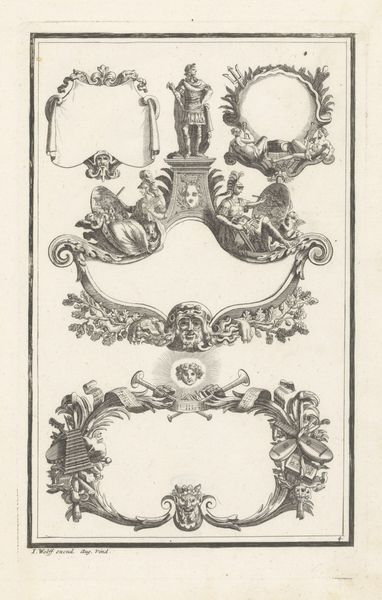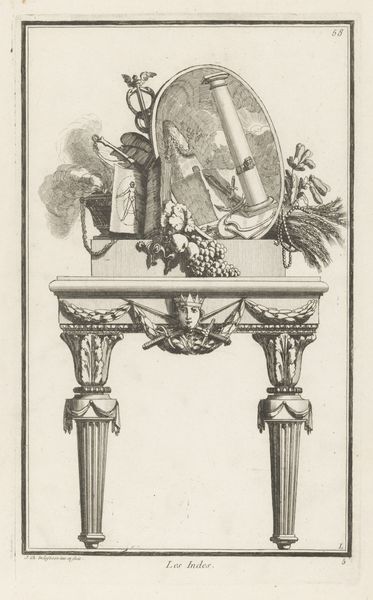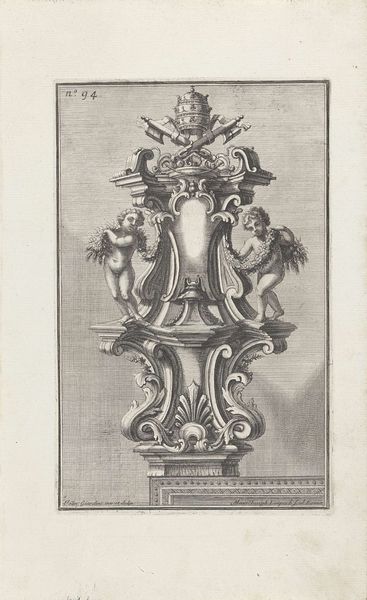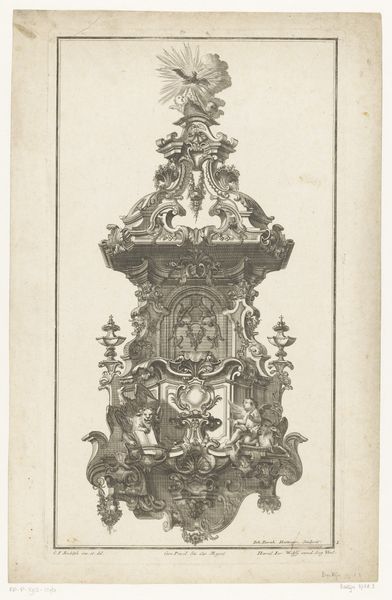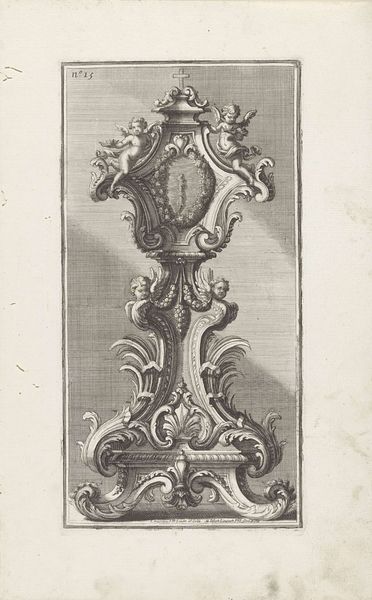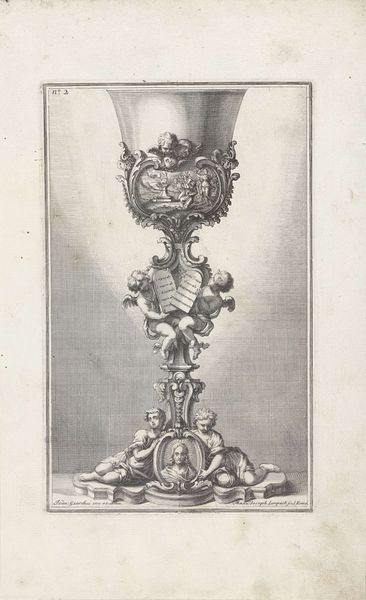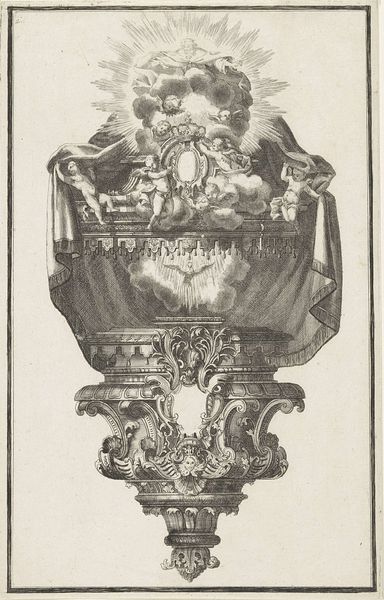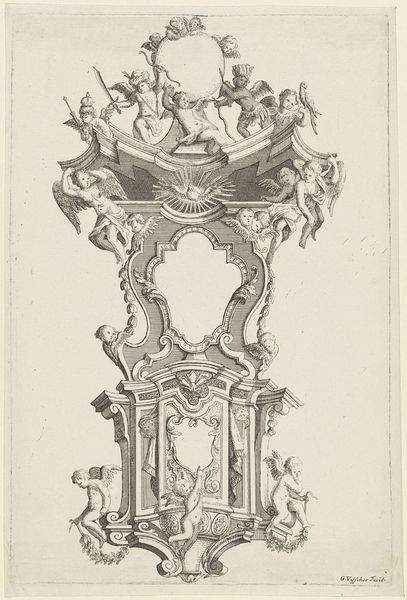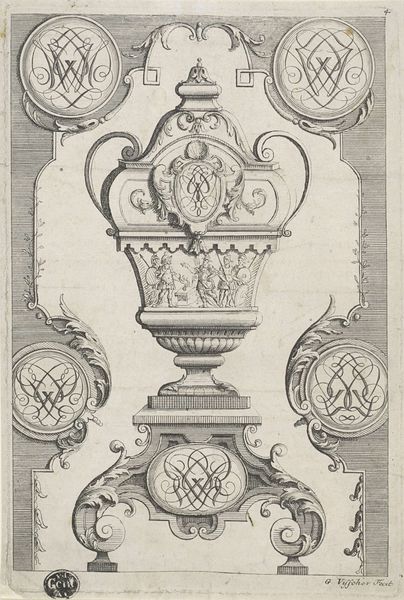
engraving
#
baroque
#
figuration
#
engraving
Dimensions: height 277 mm, width 188 mm
Copyright: Rijks Museum: Open Domain
Editor: This is an engraving entitled "Preekstoel met engelen," or "Pulpit with Angels," likely dating from the late 17th to early 18th century and held at the Rijksmuseum. Its creator is listed as Johann Conrad Reiff. Curator: Immediately striking is the piece’s rigid vertical structure. Note how the design is segregated into distinct horizontal registers, giving the overall work a pronounced sense of order and proportion, despite the flamboyant ornamentation. Editor: Angels everywhere! Aren’t they a traditional symbol for divine communication and favor? Notice the lower cherubs supporting the base upon clouds. It evokes this sense of spiritual levitation—of being raised by grace. Curator: Absolutely. Consider also how the Baroque style maximizes movement with its curved forms. Even though it’s static and two-dimensional, the line work creates dynamic contours. Look at the top section: an ornate backdrop, possibly for a crucifix, where angels literally support what could be the throne of God. Editor: Indeed. This design practically overflows with iconographic richness, which reminds me of that cultural context—Baroque art often sought to stir religious emotion and glorify the Church. That ornate detail acts almost like a persuasive visual sermon. Curator: Semiotically, that is fascinating, if we decode this symbolic lexicon. Ornamentation serves as signifier, referencing not merely aesthetics but embedded cultural and social norms that influence design decisions, revealing meaning beyond the simple depiction. Editor: Looking at the overall symbolism, then, this reminds us that Baroque isn't only about decoration; but using every device available to stir something visceral in the viewer. Perhaps through its architectural forms and winged messengers. Curator: Precisely. The tension in the contrast of line against form creates dynamism. As a physical construct—lines scratched upon the page—the interplay embodies a very refined structural intention that allows this image to become far greater than the sum of its individual strokes. Editor: So, as an image and symbol then, this print embodies the ornate visual language through which faith found grand, complex expression during the Baroque era. Curator: Yes, truly a potent reminder of how structural clarity underlies the most seemingly chaotic forms.
Comments
No comments
Be the first to comment and join the conversation on the ultimate creative platform.
